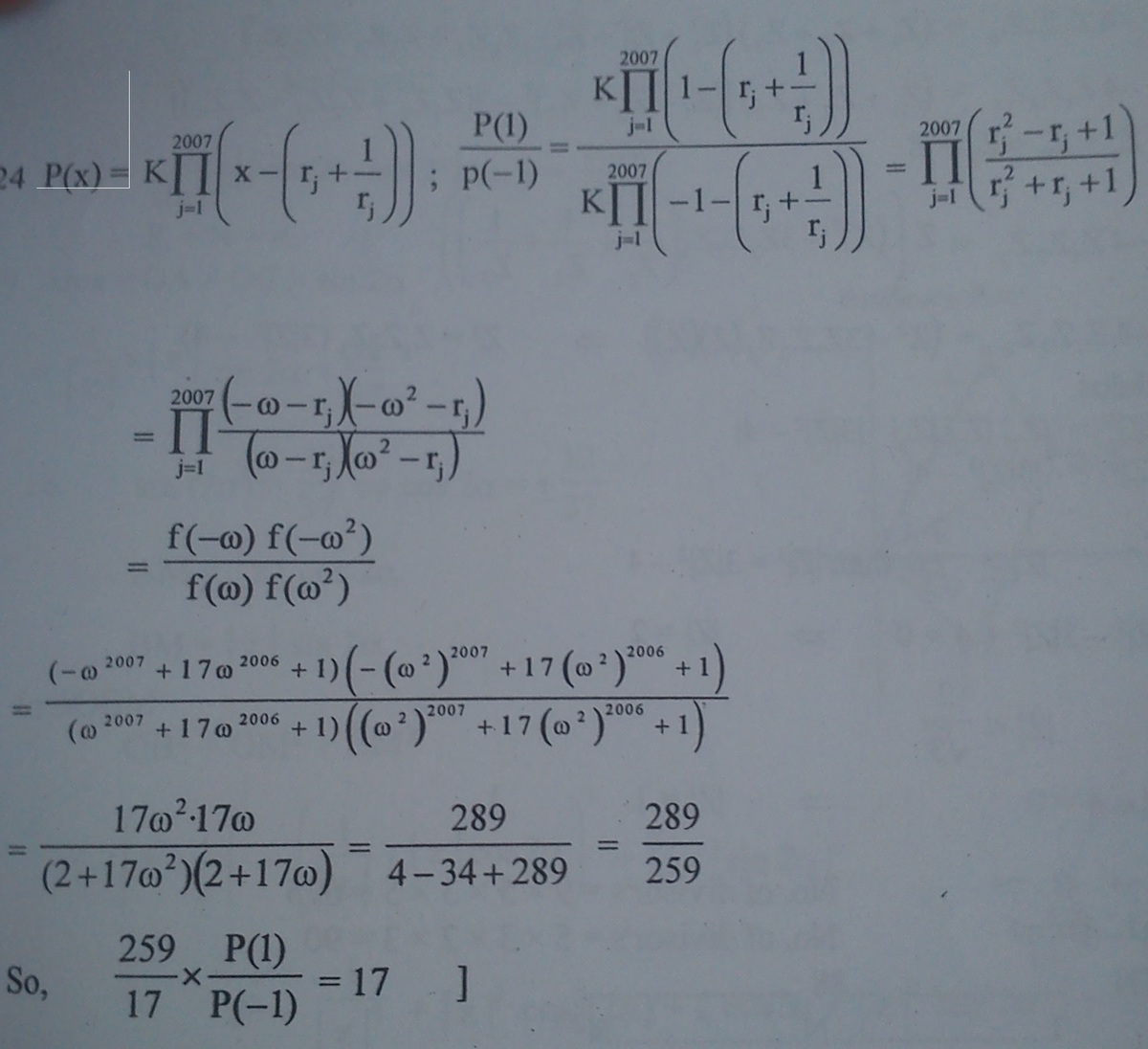Polynomials going crazy!
The polynomial f ( x ) = x 2 0 0 7 + 1 7 x 2 0 0 6 + 1 has distinct roots r 1 , r 2 , … , r 2 0 0 7 . A polynomial P of degree 2007 has the property that P ( r j + r j 1 ) = 0 for j = 1 , 2 , … , 2 0 0 7 .
Compute 1 7 2 5 9 × P ( − 1 ) P ( 1 ) .
The answer is 17.
This section requires Javascript.
You are seeing this because something didn't load right. We suggest you, (a) try
refreshing the page, (b) enabling javascript if it is disabled on your browser and,
finally, (c)
loading the
non-javascript version of this page
. We're sorry about the hassle.
2 solutions
same here. nice problem.
i was doing same but didnt notice substitution of w
Can I ask its source?

We can see that none of the roots of f ( x ) is zero. So we can form a polynomial whose roots are the numbers r j 1 for j = 1 , 2 , 3 , . . . , 2 0 0 7 and with 1 as leading coefficient just by considering g ( x ) = x 2 0 0 7 f ( x 1 ) , and, additionally, g ( x ) = ∏ j = 1 2 0 0 7 ( x − r j 1 ) .
Since P ( x ) = c ∏ j = 1 2 0 0 7 ( x − r j − r j 1 ) where c is a constant then, P ( x + x 1 ) = c j = 1 ∏ 2 0 0 7 ( x + x 1 − r j − r j 1 ) = c j = 1 ∏ 2 0 0 7 x ( x − r j ) ( x − r j 1 ) = c x − 2 0 0 7 f ( x ) g ( x ) = c f ( x ) f ( x 1 ) .
Now, since e i 3 π + e i 3 π 1 = 1 , e i 3 2 π + e i 3 2 π 1 = − 1 , and using the equality above, we obtain that 1 7 2 5 9 × P ( − 1 ) P ( 1 ) = 1 7 2 5 9 × P ( e i 3 2 π + e i 3 2 π 1 ) P ( e i 3 π + e i 3 π 1 ) = 1 7 2 5 9 × f ( e i 3 2 π ) f ( e i 3 2 π 1 ) f ( i 3 π ) f ( e i 3 π 1 ) = 1 7 2 5 9 × 2 5 9 1 7 2 = 1 7 .